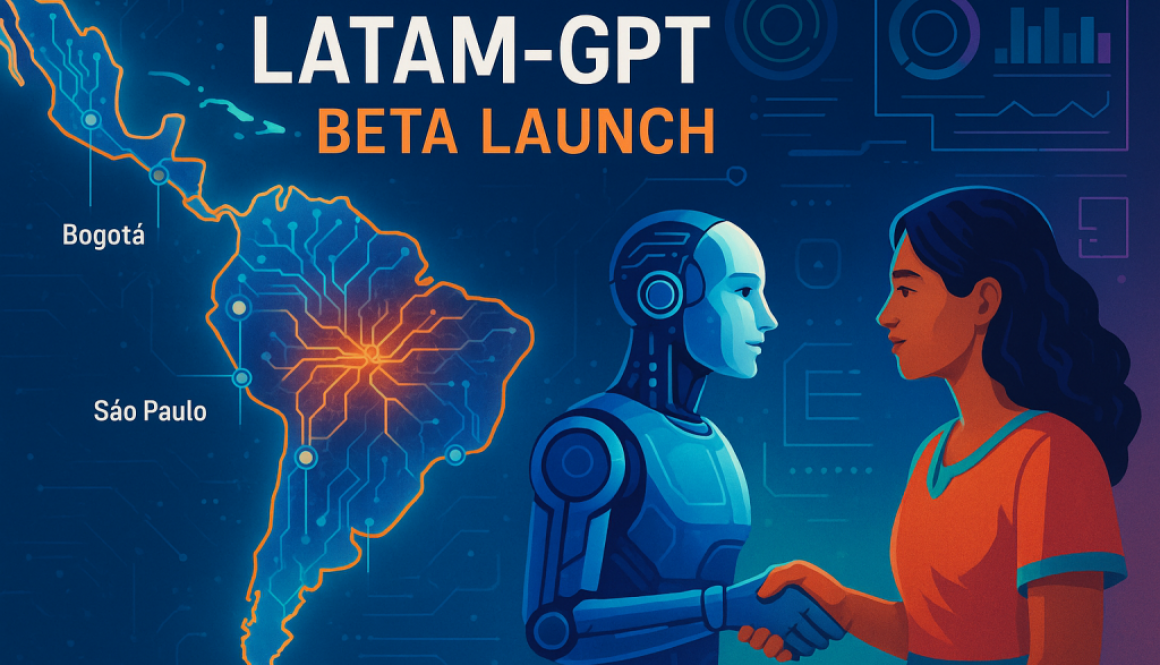Sector Shifts: Where LATAM’s Hiring Demand Is Growing in 2025
In 2025, Latin America (LATAM) is witnessing a transformation in hiring demand. No longer limited to broad “tech” roles, companies are increasingly targeting specialized talent in AI, cloud, fintech, and adjacent emerging sectors. For organizations looking to scale in LATAM or tap its talent pools, understanding which sectors are accelerating is key to making smart hiring decisions.
Below, we break down the leading sectors attracting hiring demand and what this means for companies and professionals alike.
1. Fintech & Digital Finance
Fintech remains one of LATAM’s most dynamic sectors for hiring. Growth in digital financial services, open banking, and underbanked populations has fueled demand for talent in payments, lending platforms, regtech, and embedded finance.
- The number of fintech startups in LATAM grew over fourfold from 2017 to 2023 (from ~703 to more than 3,000) according to IDB and Finnovista with Brazil, Mexico, Colombia, Chile, and Argentina leading the count.
- Fintech now accounts for a large share of VC investment in LATAM, making it a prime sector for recruiting roles in product, compliance, risk, and AI-driven credit scoring.
- Within fintech, demand is especially strong for back-end engineers, data scientists, fraud detection experts, and compliance/AML specialists.
If your organization is in financial services or wants to embed finance into your product, LATAM offers deep talent pools and business innovation potential.
2. AI, Machine Learning & Data Intelligence
AI roles remain the fastest-growing niche in tech hiring across LATAM. Companies are moving beyond pilots toward embedding AI in operations, customer experience, and decision systems.
- According to the World Economic Forum’s Future of Jobs Report 2025, data analysts, AI and machine learning specialists are projected to be among the fastest-growing roles in Latin America and the Caribbean.
- A recent survey of Brazilian firms noted that generative AI tools are transforming work in sectors like content, customer service, graphic design, and software development.
- LATAM is already producing research on “emerging AI powers” countries like Argentina, Colombia, and Uruguay are rising in rankings due to education, infrastructure, and finance pillars.
Roles in high demand include ML engineers, NLP specialists, prompt engineers, AI operations roles, and those combining domain expertise (e.g. healthcare, manufacturing) with AI skills.
3. Cloud Infrastructure & DevOps / Site Reliability Engineering
The shift from on-prem systems to cloud and hybrid architectures is driving demand for cloud engineers, DevOps, SRE, and reliability specialists across LATAM.
- AWS plans to invest USD 4 billion in cloud infrastructure in Chile, marking its third cloud region in Latin America after Brazil and Mexico. This expansion will create new demand for local cloud operations, security, and infrastructure teams.
- As companies adopt scalable cloud systems, they need engineering talent that can manage containerization, CI/CD, observability, security, and platform scaling.
Those who understand multi-cloud, Kubernetes, infrastructure-as-code, and resilience patterns are particularly sought after.
4. SaaS, B2B Tech & Platform Businesses
SaaS and B2B platforms are rising in prominence in Latin America. The de-centralization of software is enabling global players to build from LATAM and serve markets across the Americas and beyond.
- The LatAm Tech Report highlights SaaS alongside fintech, e-commerce, healthtech, and climate tech as sectors drawing investor attention and talent.
- Many B2B fintech, productivity tools, and industry platforms are expanding, requiring teams skilled in full-stack development, APIs, integrations, UX, and platform growth.
Hiring emphasis in this sector often falls on product engineers, API developers, backend architects, and customer success engineers who can scale SaaS offerings globally.
5. Data Enrichment & Crowd / Annotation Work
While not always front-of-mind, data enrichment and labeling work remains a backbone for AI systems. LATAM is becoming a hub for this labor.
- A recent study surveyed 100 crowdworkers across Latin America and the Caribbean, analyzing their roles in data labeling and enrichment for global AI systems. The authors emphasized the importance of this work as foundational to deploying AI at scale.
- Companies building AI models need data pipelines, quality assurance, annotation platforms, and governance. These roles are often entry-level but scalable and distributed.
For tech teams, investing in reliable data enrichment capacity can accelerate model training and maintain quality control across AI workflows.
What This Means for Hiring Strategy
These sector shifts signal where demand is heading. Here are strategic takeaways for HR leaders, founders, and talent teams:
- Target the intersection of sector + tech skills. Rather than hiring generic engineers, look for candidates with domain experience in fintech, health, or logistics plus AI/ML capability.
- Invest in local infrastructure talent. As cloud expansion hits LATAM, securing local SRE, DevOps, and infrastructure engineers becomes a competitive moat.
- Leverage data enrichment as a recruiting entry point. Roles in annotation and data pipelines often serve as on-ramps for junior talent to grow into ML engineering.
- Blend soft skills with technical skills. Reports show increasing employer focus on leadership, resilience, and adaptability. For 2025, 84% of LATAM employers plan to upskill internally to meet digital demand.
- Use regional differentiators. LATAM offers time zone alignment with North America, cultural proximity, and growing English proficiency—all of which amplify collaboration and team productivity.
At Tesoro AI, we are tracking these shifts closely. When clients come to us looking to scale their AI or cloud teams, we now anticipate sector-led hiring patterns and ensure our talent networks stay aligned with high-growth verticals.
As Latin America’s tech landscape continues to mature, the opportunity lies not just in recruiting more but in recruiting smarter.
Sources
- Banco Interamericano de Desarrollo (IDB) & Finnovista. (2024). Fintech in Latin America: Growth and opportunities in a digital era. Inter-American Development Bank. Retrieved from https://www.iadb.org
- Bloomberg Línea. (2025, May). Latin America’s tech hiring surge enters a new phase. Retrieved from https://www.bloomberglinea.com
- Latitud. (2025). The LatAm Tech Report: Main Insights. Latitud. Retrieved from https://www.latitud.com/blog/the-latam-tech-report-main-insights
- Reuters. (2024, June 20). Latin American fintechs quadruple in the past six years with more room to grow. Reuters Technology. Retrieved from https://www.reuters.com/technology/
- Reuters. (2025, May 7). Amazon to spend $4 billion on cloud infrastructure in Chile. Reuters Business. Retrieved from https://www.reuters.com/business/
- World Economic Forum. (2025, April). The Future of Jobs in Latin America and the Caribbean: Digital skills gap must close quickly to satisfy evolving employer demands. World Economic Forum. Retrieved from https://www.weforum.org
- Arxiv. (2025, January). Mapping emerging AI powers in Latin America: Education, infrastructure, and finance. Cornell University. Retrieved from https://arxiv.org
- Arxiv. (2025, May). Generative AI and productivity in emerging economies: Evidence from Brazil and Mexico. Cornell University. Retrieved from https://arxiv.org
- AI Global Workforce Report. (2025). AI labor dynamics and data annotation in Latin America. Global AI Research Institute. Retrieved from https://www.aiglobalreport.org










